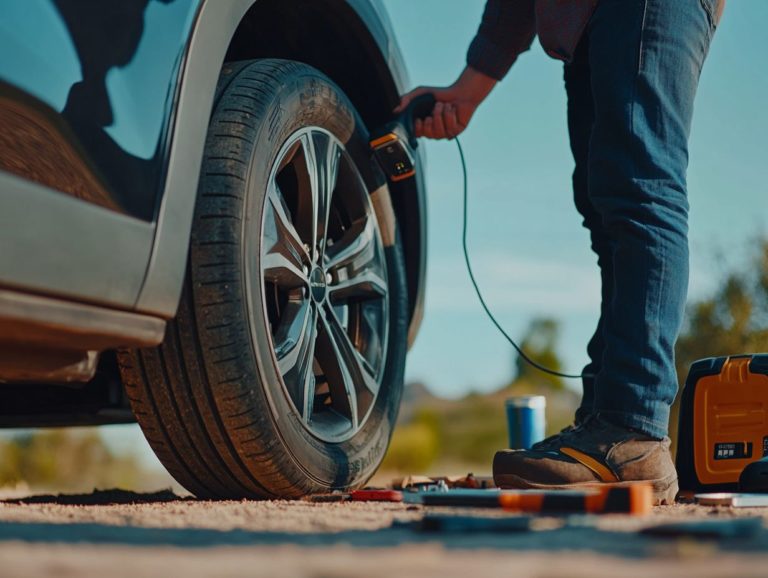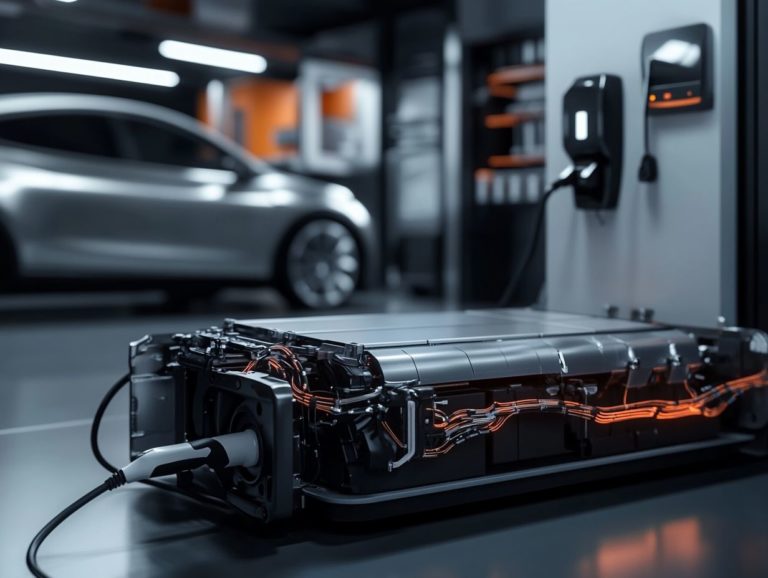How to Check Your EV’s Fluid Levels
Maintaining your electric vehicle (EV) goes beyond merely keeping the battery charged. Regular inspections of fluid levels are vital for ensuring optimal performance.
Routine maintenance is essential. Recognizing the key types of fluids your EV utilizes is crucial. This guide will equip you with the knowledge to check these levels effectively.
You ll discover the essential tools required and expert tips on maintaining balance within your vehicle. By following these insights, you can keep your EV running smoothly and efficiently.
Contents
- Key Takeaways:
- Importance of Checking EV Fluid Levels
- Types of Fluids in an EV
- Tools and Materials Needed
- Step-by-Step Guide to Checking Fluid Levels
- Tips for Maintaining Proper Fluid Levels
- Frequently Asked Questions
- 1. How do I check the fluid levels in my EV?
- 2. What are the different types of fluid that I need to check in my EV?
- 3. Can I check my EV’s fluid levels without any prior experience?
- 4. How often should I check my EV’s fluid levels?
- 5. What should I do if I notice low fluid levels in my EV?
- 6. Can I drive my EV if the fluid levels are low?
Key Takeaways:
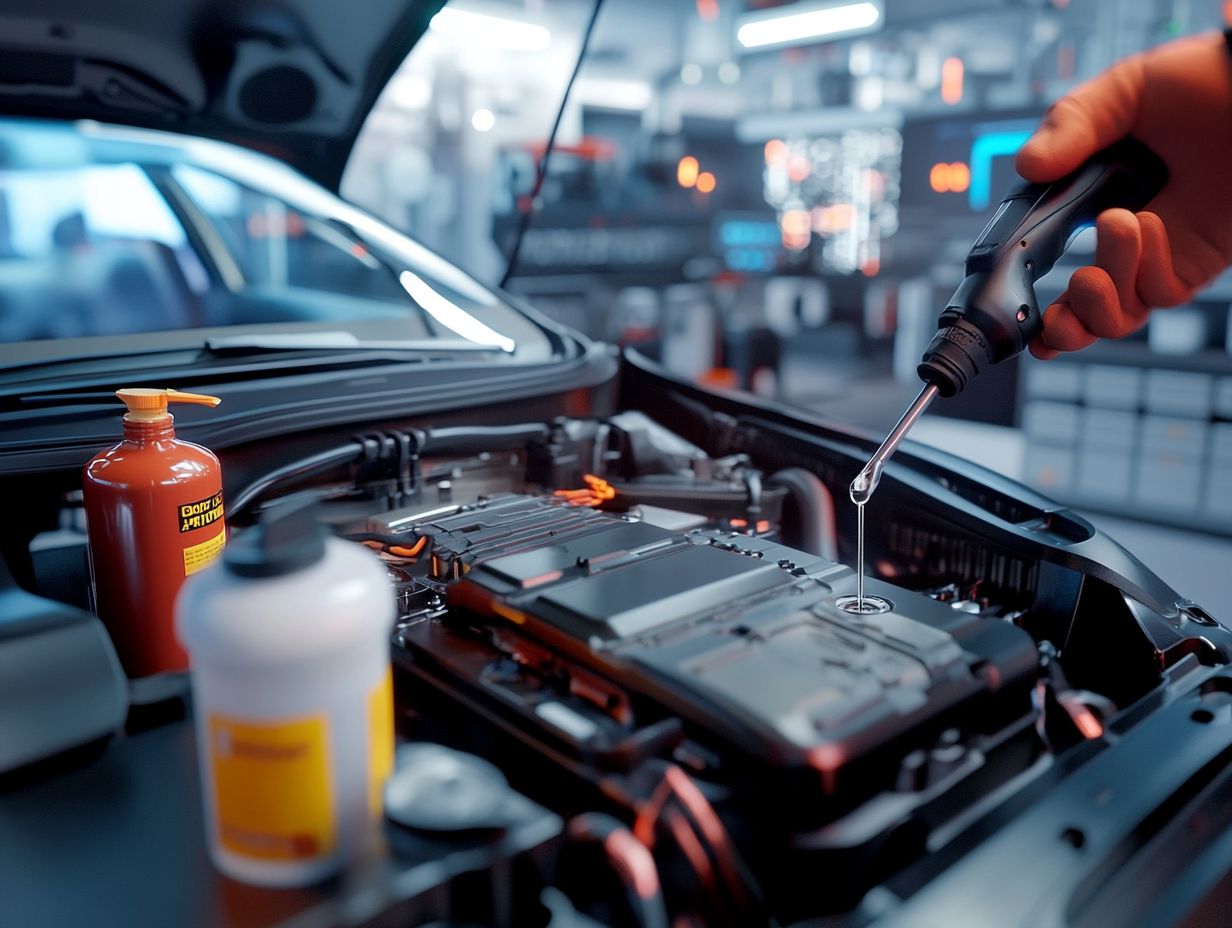
- Regular maintenance keeps your EV running efficiently.
- Understanding different types of fluids and their functions is essential for maintaining performance.
- Having the right tools and following a step-by-step guide helps prevent low fluid levels.
Importance of Checking EV Fluid Levels
Monitoring the fluid levels in electric vehicles (EVs) like the Tesla Model 3 and Nissan Leaf is essential for maintaining optimal performance and extending the vehicle’s lifespan.
Unlike conventional internal combustion engines, EVs depend on several fluids, such as coolant, transmission fluid, and power steering fluid. These are vital for the efficiency of electric motors. Regularly checking these fluid levels can prevent mechanical failures and improve the effectiveness of the regenerative braking system, which helps recover energy during braking. This ultimately ensures your vehicle performs at its best, regardless of the ambient temperature.
Why Regular Maintenance is Crucial
Regular maintenance is key to keeping your electric vehicle efficient and long-lasting. Monitoring fluid levels directly affects how well your car performs.
By adhering to a well-defined maintenance schedule, you preserve your vehicle’s optimal functionality and minimize the risks associated with neglecting service intervals. Skipping these critical check-ups can lead to complications, such as reduced braking efficiency due to low brake fluid levels or serious battery performance issues from inadequate coolant.
Regular checks let you catch potential issues early. This way, you can avoid expensive repairs and stay safe on the road. Consistent upkeep is an essential practice for any diligent EV owner committed to maintaining their investment.
Types of Fluids in an EV
Electric vehicles come outfitted with a range of specialized fluids, each playing a pivotal role in ensuring the vehicle operates smoothly and safely. For instance, coolant is vital for maintaining optimal operating temperatures, while transmission fluid facilitates seamless gear transitions.
Brake fluid is essential for effective braking, and power steering fluid enhances maneuverability. Gearbox fluid and battery coolant are crucial for optimizing performance, especially in varying ambient temperatures.
Understanding these fluids can deepen your appreciation for the intricate engineering that powers your electric vehicle.
Overview of Key Fluids and Their Functions
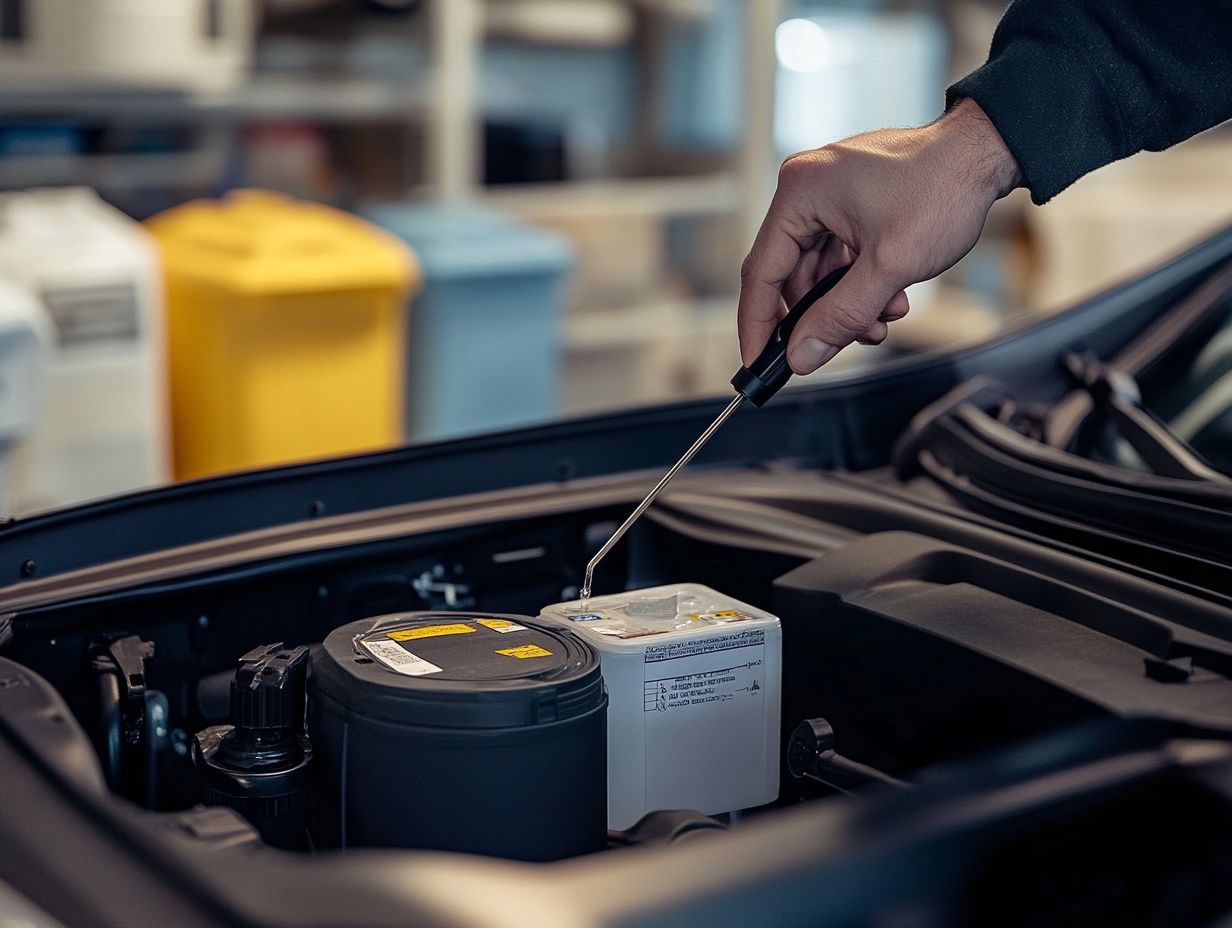
Key fluids in electric vehicles include coolant, brake fluid, transmission fluid, and gearbox fluid. Each fluid plays a vital role in the vehicle’s operation.
Understanding these fluids isn’t just about routine maintenance; it’s vital for improving performance and ensuring your safety on the road.
Coolant is crucial for regulating battery temperature, preventing overheating that could jeopardize efficiency and lifespan.
Equally significant is brake fluid, which helps the brakes work effectively by transferring force from the brake pedal to the wheels. This ensures that you can stop quickly and reliably when it matters most.
Transmission fluid enhances smooth gear shifts, improving your vehicle’s responsiveness during acceleration.
Meanwhile, gearbox fluid lubricates moving parts, reducing friction and wear. This ultimately contributes to the longevity and reliability of your vehicle.
Together, these fluids form the backbone of a well-functioning electric vehicle, directly impacting both its performance and the safety of your driving experience.
Tools and Materials Needed
To effectively check and maintain fluid levels in electric vehicles, certain tools and materials are critical. It’s important to have the right type of fluid available specifically tailored to your vehicle’s specifications.
A fluid dipstick for transmission fluid, a funnel for adding fluids, and a pressure gauge for coolant levels are essential for proper upkeep.
This attention to detail not only enhances your vehicle’s efficiency but also extends its longevity.
Essential Items for Checking Fluid Levels
Essential items for checking fluid levels in electric vehicles include a fluid dipstick, a funnel for adding fluids, and a pressure gauge for monitoring coolant levels.
Each of these tools plays a pivotal role in ensuring the seamless operation of your EV’s cooling and lubrication systems. The fluid dipstick accurately measures the levels of transmission and other vital fluids, enabling you to perform timely top-ups whenever necessary.
The funnel simplifies the task of adding various fluids, helping you avoid spills and ensuring the right amount is poured in without any mess.
The pressure gauge is critical for monitoring coolant levels, allowing you to assess whether your vehicle’s temperature regulation system is functioning optimally. This is essential for preventing overheating and maintaining peak performance.
Collectively, these components work in concert to keep electric vehicles running smoothly and efficiently.
Step-by-Step Guide to Checking Fluid Levels
Checking the fluid levels in electric vehicles is a meticulous process that guarantees each fluid, from coolant to brake fluid, is maintained at the optimal level for peak performance.
By adhering to a step-by-step guide, you can effectively monitor your vehicle’s health and stay in line with the maintenance schedules prescribed by manufacturers such as Tesla and Nissan.
This proactive approach will not only extend your vehicle’s life but also enhance your overall driving experience in thrilling new ways!
Instructions for Each Fluid Type
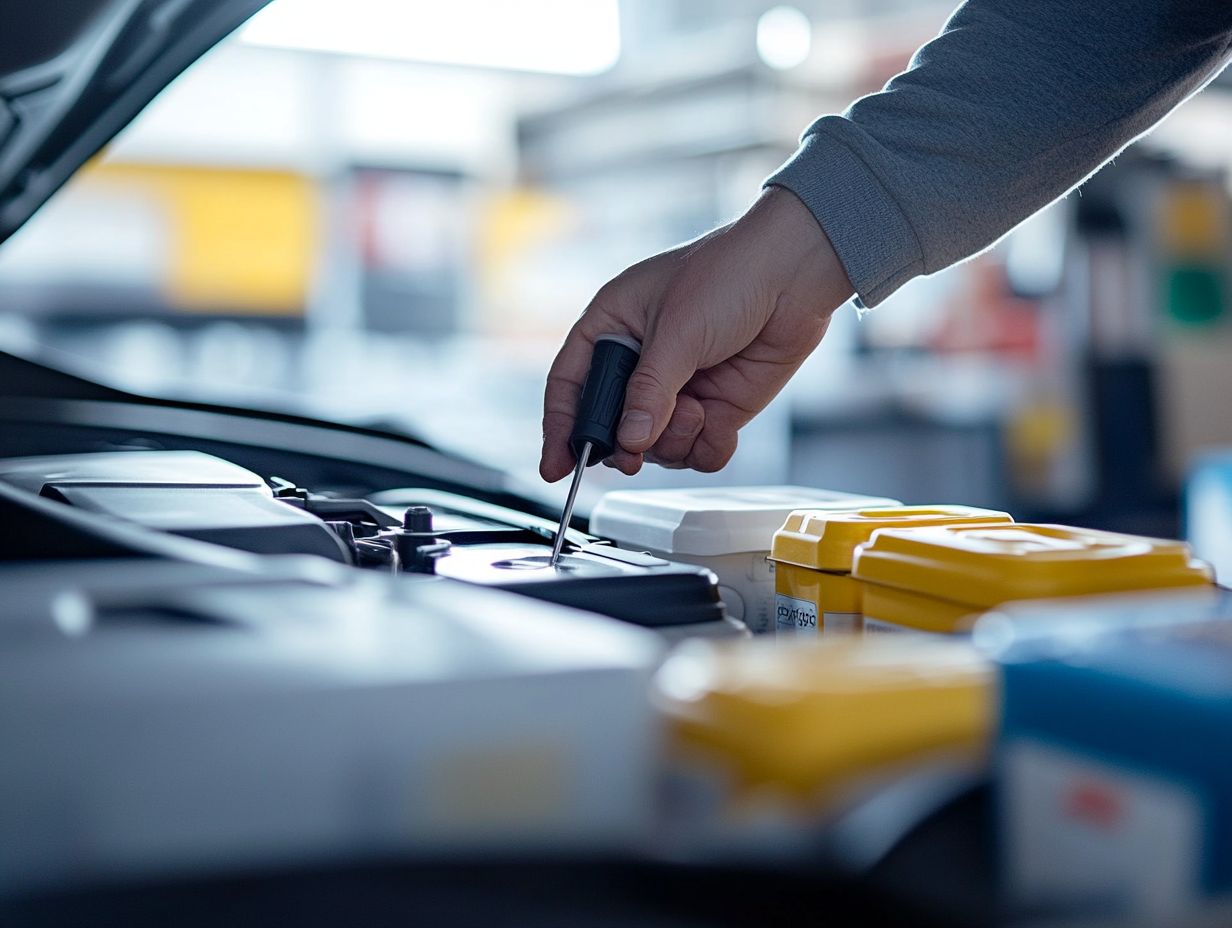
To check each fluid type in your electric vehicle, follow specific steps for coolant, brake fluid, transmission fluid, and gearbox fluid.
For optimal performance, keep essential tools handy, such as a dipstick for transmission fluid and a pressure gauge for brake fluid. Start by verifying the coolant levels while the system is cool to prevent burns and ensure accurate readings.
For brake fluid, park your vehicle on a level surface and inspect the reservoir to confirm it reaches the correct fill line. When checking transmission fluid, keep the engine running; remove the dipstick, wipe it clean, and submerge it again to evaluate both the level and condition of the fluid.
Checking the gearbox fluid often requires a specialized tool to access the fill plug. Stay informed about your manufacturer s recommendations regarding fluid changes to maintain your vehicle s efficiency.
Tips for Maintaining Proper Fluid Levels
Maintaining the right fluid levels in your electric vehicle is crucial for optimal performance, especially as ambient temperatures fluctuate and affect fluid efficiency. Regular checks and a commitment to a maintenance schedule are essential.
Recognizing the signs of low fluid levels helps you proactively prevent potential issues related to vehicle care.
How to Prevent and Address Low Levels
Preventing low fluid levels requires a commitment to regular checks and an understanding of each fluid’s critical role in optimal performance.
Routine examination of coolant, brake fluid, and transmission fluid ensures everything functions correctly. Schedule proactive maintenance checks to monitor fluid levels and top them off as needed. Staying vigilant for leaks can save you from facing major repairs down the road.
Using advanced diagnostic devices can provide insights into your vehicle’s overall health, ensuring all systems operate at their peak. By adopting these strategies, you can keep your electric vehicle in prime condition, extending its lifespan and enhancing performance.
Frequently Asked Questions
1. How do I check the fluid levels in my EV?
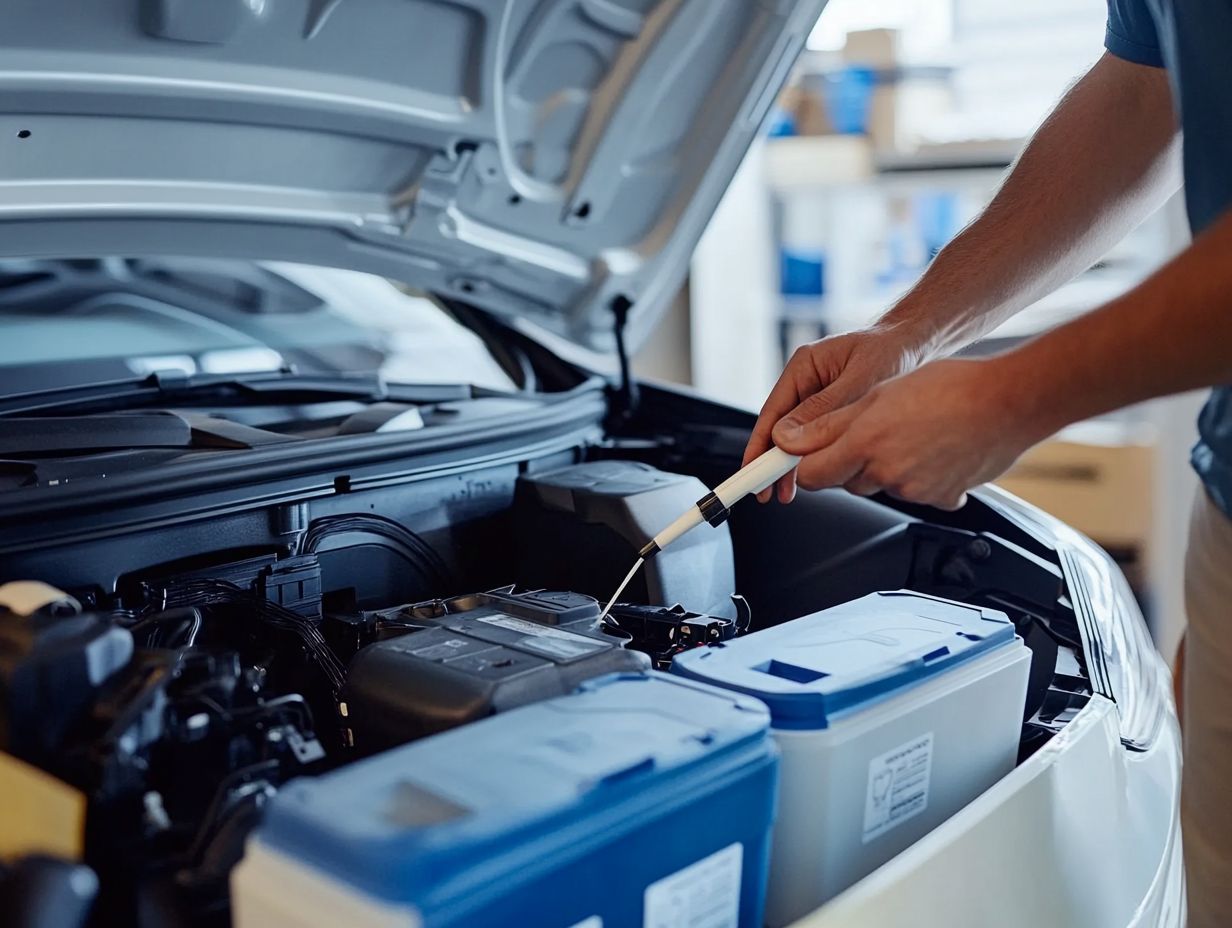
To check the fluid levels in your EV, refer to your vehicle’s owner’s manual. Each model may have a different process, so follow the specific instructions for your EV.
2. What are the different types of fluid that I need to check in my EV?
The common fluids to check in an EV include coolant, brake fluid, and windshield washer fluid. Always consult your owner’s manual for a complete list of fluids specific to your vehicle.
3. Can I check my EV’s fluid levels without any prior experience?
Yes, you can check your EV’s fluid levels even without prior experience. Follow the instructions in your owner’s manual carefully for accurate readings and proper maintenance.
4. How often should I check my EV’s fluid levels?
Make it a habit to check your EV’s fluid levels at least once a month or before any long trips. If you notice any abnormalities in your vehicle’s performance, check the fluid levels immediately.
5. What should I do if I notice low fluid levels in my EV?
If you notice low fluid levels in your EV, top them off as soon as possible. If you’re uncomfortable doing it yourself, take your vehicle to a certified EV mechanic for assistance.
6. Can I drive my EV if the fluid levels are low?
No, it’s not recommended to drive your EV if the fluid levels are low. Low fluid levels can damage your vehicle’s systems and lead to costly repairs. Address any low fluid levels before driving your EV.
Take action today! Regularly check your vehicle’s fluid levels to ensure optimal performance and longevity.





